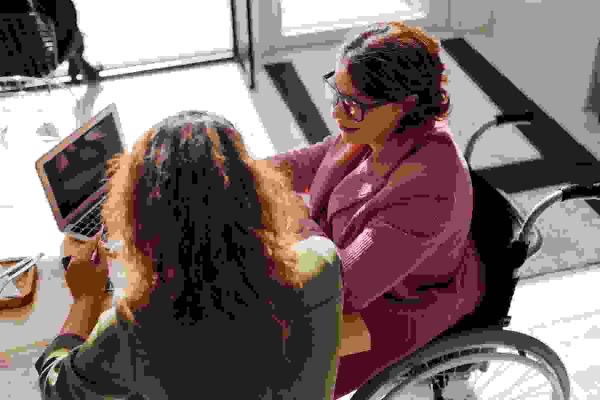How does a business widen its talent pool?

There is an ever-growing amount of evidence to demonstrate the benefits of having a diverse workforce, with findings proving it can lead to economic growth, improved creativity, an enhanced workplace culture, staff retention and motivation- to mention just a few.
Despite this, many organisations find themselves caught in a cycle of only appealing to a very limited demographic and therefore, they are looking for new ways to attract a new, more diverse talent pool.
To help you on your journey to widening your appeal, we have compiled a few pointers towards making your opportunities more available and attractive to people with disabilities.
Shout about your commitment to difference
To ensure you appeal to a talent pool that includes people with disabilities, you must make your commitment to inclusivity clear, and openly state that your company welcomes candidates with a disability. You can do this everywhere- your website, job role descriptions, marketing materials and so on.
Of course, this can only be done after you have made the right changes. First, you’ll need to ensure you can actually accommodate the needs of potential employees with disabilities. In terms of the recruitment stage, you can level up your advertisements and interview methods so that applications can be accessed, completed and navigated by all.
This means creating various different formats to accommodate as many different disabilities as possible. These should include options such as dyslexia friendly texts, large print availability, plain text versions, with alt text tags on all social media images, so people with sight impairments can also be aware of the opportunity. You can also consider recruitment websites and platforms that specifically promote opportunities to people with disabilities, such as Evenbreak or Disability Jobsite.
Make a cultural shift
Probably the most important way to attract, recruit and retain staff with disabilities, is to openly create an inclusive workplace culture. After all, If other staff members lack an inclusive mindset, efforts to be accessible are pointless! Imagine for example, creating the perfect accessible physical environment that caters for every need- but co-workers and managers lack an empathetic understanding, and have no real knowledge or experience of disability. This would create an environment that people with disabilities can physically access, but will struggle with in all other ways, resulting in them leaving or not accepting a job in the first place.
This problem can of course be alleviated through disability awareness training for all staff, across all teams, at all levels of seniority (check out our training pages- and online training dates for more info on our offering).
With awareness of disability, managers and those conducting interviews can better understand complex needs, and have knowledge of things such as correct use of language, disability etiquette, and unconscious bias- all of which will improve the likelihood of people with disabilities accepting the position if offered- and having success at the selection stage.
After creating an improved sense of awareness around disability you will naturally cultivate an empathetic, understanding and supportive team and inclusive company ethos, which will inevitably attract new employees with disabilities.
Inclusivity from the top down
Getting senior staff members on board is recommended and will make the development of an inclusive culture a lot easier and much more successful. It not only shows a commitment across the entire hierarchy, but it also allows inclusivity to permeate across all divisions and teams, becoming an intrinsic part of the ethos and overall mission and strategy of the organisation, and this will be noted by people with disabilities.
Also, by ensuring all teams (and not just HR) have disability awareness training, a more collective effort will develop which will improve recruitment strategies. For example, during the recruitment process, IT will understand the importance of accessibility across the company website, those in communications and marketing will be ready to create accessible materials and social media posts and so on.
Monitor your talent attraction progress
After you have become more inclusive in your recruitment strategies, be aware of the number of people with disabilities your new efforts attract, recruit and retain. Pay attention to and source the feedback of any staff you currently employ regularly, and review where you could improve as an employer. Consider a steering group that includes staff from all teams and divisions and make sure inclusivity is deeply embedded in your efforts to constantly improve your recruitment strategies.
Finally- don’t forget to celebrate achievements, goals and objectives related to inclusivity and your recruitment, the more open and unified your efforts to be inclusive are, the more attractive your company will be, and the deeper your new talent pool will become.
Chris Jay, Managing Director of Bascule Disability Training



